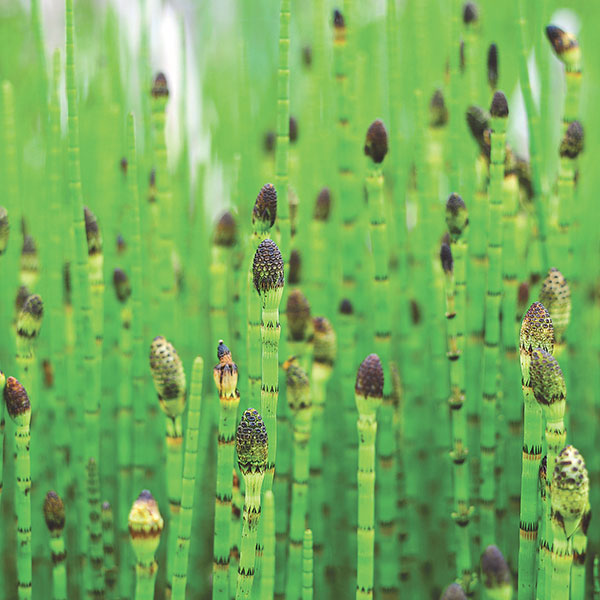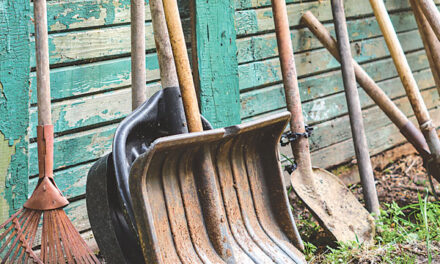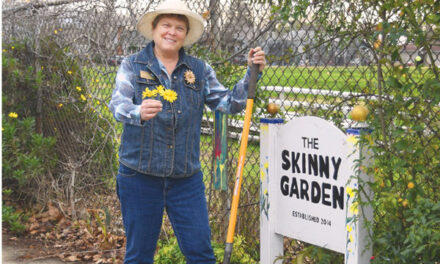Give Them an Inch
Tackling vigorous and invasive plants
By Anita Clevenger
March 2020
I don’t really consider plants “invasive” that are easy to remove. California poppies, sweet peas and other plants that self-seed can be readily pulled out if they pop up in unwanted places.

The first invasive plant that I added to my garden was my neighbor’s horseradish. Even though I didn’t care for its taste, it was in my garden to stay. The only way to remove horseradish is to dig it out, removing every bit of root. Usually, some root is left behind and you have to keep digging, year after year.
The advice to control horseradish is to keep it in a container. That’s the way to grow mint too. For years, I kept mint under control in a pot sunk part-way into the ground. That worked fine until it finally escaped. It was amazing how quickly it spread, and how hard it was to remove.
A landscaper planted a cat’s claw vine (Macfadyena unguis-cati) to cover a concrete block wall to the rear of our yard. When we wanted to take out the vine 10 years later, it had other ideas. The vine had developed large tuberous roots that have been impossible to fully remove. We will be digging this plant out for the rest of our lives.
I always shudder when I see people landscape with horsetail (Equisetum hyemale). My friend, Barbara Oliva, fought a losing battle to this plant at her home. It’s beautiful, but must be contained. Running bamboos and showy milkweeds are other invasive plants that I’ve managed to avoid.
Some plants are officially considered “invasive” by the California Invasive Plant Council because they spread into natural areas and harm the environment. CAL-IPC’s “Don’t Plant a Pest” brochure recommends alternatives to some of the plants that cause the greatest problems. For a list of recommended alternatives and information on ordering the brochure, visit cal-ipc.org/solutions/prevention/landscaping/dpp.
You also can search an inventory of plants that threaten California’s natural areas, including invasive plants and “watch” plants that are a high risk of becoming invasive, at cal-ipc.org/plants/inventory.
A vigorous plant can be a blessing or a curse. Be wary when fellow gardeners offer to pass along a plant to you. It’s very possible that it has taken over their gardens, which is why they have plenty to spare.
The next Open Garden will be Saturday, March 14, from 9 a.m.–noon at the Fair Oaks Horticulture Center, 11549 Fair Oaks Blvd. in Fair Oaks.
Anita Clevenger is a platinum Sacramento County Master Gardener. For answers to gardening questions, contact the UC Master Gardeners at (916) 876-5338 or mgsacramento@ucanr.edu, or visit sacmg.ucanr.edu. Follow us on Facebook, Twitter and Instagram: @insidesacramento.















